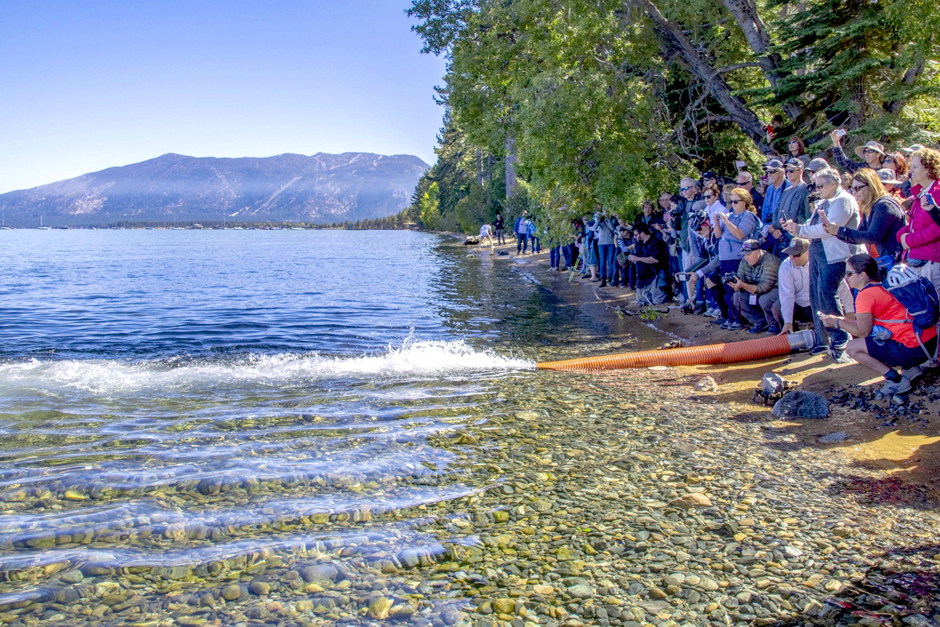Lahontan Cutthroat Trout Return to Pyramid Lake
 Crowds gather to watch Lahontan cutthroat trout stocking on Oct. 5, 2019 along Kiva Beach. (Credit: Joanna Gilkeson/USFWS, Public Domain)
Crowds gather to watch Lahontan cutthroat trout stocking on Oct. 5, 2019 along Kiva Beach. (Credit: Joanna Gilkeson/USFWS, Public Domain)According to the U.S. Fish and Wildlife Service, Lahontan cutthroat trout completely disappeared from Nevada’s waterways in the 1930s, likely as a result of shifting resource management. Early settlement in the West may have also led the fish to disappear due to overfishing and environmental damages caused by logging.
In 1970, the Lahontan cutthroat trout was added to the endangered species list under the Endangered Species Act. As a result, state officials and researchers began to work together to restore the population.
The hard work of hatcheries and stocking events helped restore the fish to its natural habitat. Fortunately, efforts appear to be working as the fish continues to thrive in 2022. It seemed that efforts were in vain for a long time—that restoring the Lahontan cutthroat trout was a lost cause. However, as of 2019, Pyramid Lake has a thriving Lahontan cutthroat trout population.

As numbers of Lahontan cutthroat trout dwindled, their position as top predator in Lake Tahoe was backfilled by stocked nonnative sportfish such as lake trout, rainbow trout and kokanee salmon, and was eventually listed under the Endangered Species Act in 1970. (Credit: Joanna Gilkeson/USFWS, Public Domain)
Historical References
The modern Lahontan cutthroat trout was born from a Pilot Peak strain found in Utah. For years, researchers were sure the Pilot Peak strain matched the genetic makeup of the long-gone trout. In 2019, Professor Mary Peacock published work that definitively proved the genetic makeup of the Pilot Peak strain matched that of the original Pyramid Lake fish mounts found in museums across the country.
Ultimately, the USFWS’s Lahontan National Fish Hatchery Complex and the Pyramid Lake Paiute Tribe brought the species back to Nevada. Together, both groups have continued to help the population grow and succeed. The Paiute Tribe has been essential in helping to restore waterways and surrounding lands. Additionally, their close relationship and geographic location in regard to the trout have been critical for monitoring changes and growth.
Historically, the fish used to migrate more than 120 miles each year, and researchers would like to see a return of the behavior. Luckily, Lisa Heki, a biologist who works for the U.S. Fish and Wildlife Service, believes that the restoration of migration patterns will occur in no time.
“I expect to see them swimming through Reno and Sparks and downstream of Tahoe dam in 10 years easily, if not before,” stated Heki in an article published by the U.S. Fish and Wildlife Service.



Pingback: FishSens Magazine | The Return of Razorback Suckers to the Grand Canyon - FishSens Magazine
Pingback: FishSens Magazine | Balancing Northern Pike and Westslope Cutthroat Trout in Coeur d’Alene Lake - FishSens Magazine